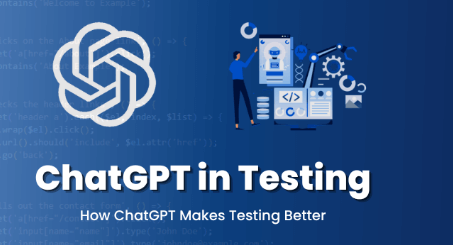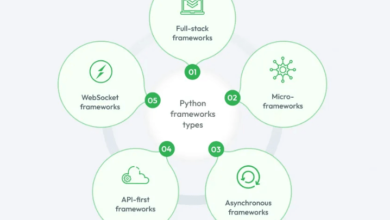
ChatGPT for Test Automation: Opportunities and Limitations
ChatGPT has transformed contemporary software quality assurance. ChatGPT for test automation provides automated intelligent script creation, comprehensive test coverage, and fault detection, which was previously challenging to achieve. ChatGPT uses advanced natural language understanding and complex language models, which enable it to review functional specifications, acceptance criteria, and system behavior to generate organized test cases while providing suggestions to improve existing automation processes. Combined with generative AI testing, ChatGPT enhances the simulation of complex user interactions, detection of edge cases, and identification of anomalous system behaviors, thereby supporting a highly cohesive automated testing environment.
Intelligent Test Script Generation
ChatGPT enhances automation flexibility by enabling structured test scripts that are context-aware within natural language specifications. It can evaluate functional requirements and workflow descriptions and can recommend testing procedures based on popular frameworks like Selenium, Playwright, JUnit, and TestNG. The generated scripts generally contain user interactions, functional checks, and validation steps to assure the system has behaved as expected.
ChatGPT can also produce tests for complex conditions: not only the basic scenarios associated with user interaction, but also complex transactions that are multi-step, concurrent user sessions and dynamic content validation. In addition to test generation for the user interaction scenarios, ChatGPT can produce variations that are often used for data-focused tests: boundary conditions, invalid inputs, and stress test situations without the substantial manual coding overhead that impedes every automation pipeline and limits enterprise levels of test coverage.
Test Case Optimization and Maintenance
Test suite optimization and maintenance is also another domain where ChatGPT provides considerable value. It looks at automated test suites already deployed and identifies redundancy, inefficiencies, and coverage gaps. It is capable of:
- Identifying overlapping or redundant test steps in a test suite to reduce overall time by stopping duplicate and unincremented efforts.
- Proposing the modularization of scripts to enable their reuse in various suites and workflows.
- Identifying coverage gaps in the functional specification so that critical paths and edge cases can be validated.
- Modifying test scripts to correspond with updates in features, changes in APIs, and adjustments to dependent services.
- Prioritizing high-value tests based on historical execution tendencies, defects, patterns from regression analysis, and previous defects.
- Identifying non-deterministic tests and proposing modifications to enhance their reliability.
- Providing visibility to optimize dependencies and execution ordering or sequences in a distributed system, or possibly a microservice.
- Recommending automating repetitive maintenance tasks to decrease the levels of manual effort and increase consistency.
This systematized approach keeps the test suite partially manual and is reliable, efficient, and adaptable to change, updates, and complexity.
Integration with CI/CD Pipelines
The ability to seamlessly plug in to CI/CD pipelines is a key benefit of ChatGPT with regard to test automation. AI-generated scripts can be automatically executed via code commits, pull requests, or build completions, so the functional regressions and integration issues are discovered more quickly.
LambdaTest complements ChatGPT’s capabilities in test automation by providing a reliable execution environment. While ChatGPT can generate test scripts, LambdaTest ensures these scripts run efficiently across various browsers and devices.
The platform’s SmartUI offers visual regression testing, validating UI consistency. LambdaTest’s AI Agents assist in maintaining test scripts by auto-healing locators and identifying flaky tests. These features address some of the limitations of AI-generated tests, ensuring they are robust and reliable in real-world scenarios.
Advanced Validation with Generative AI Testing
Using generative AI tests with ChatGPT extends beyond traditional automation. Generative tests also use probabilistic modelling, simulated scenario simulation, and dynamic data generation that expands typical patterns of input to output by identifying potential anomalous behaviors.
ChatGPT is able to generate tests for situations where standard I/O pairs may not exist: adaptive user interfaces, context-sensitive workflows, and dynamic content, to name a few. For example, testing applications that behave differently based on user location, prior user transactions, or triggering events that happen at different times is enhanced testing.
Anomaly detection would also be more effective using expected system behavior models. Identifying deviations from the model is helpful where there is significant variability in behaviors or dynamic content, as traditional automation only relies on rules and may not translate the subtle variations or inconsistencies that exist.
Limitations and Considerations
Although it provides advantages, ChatGPT has built-in constraints in test automation. While capable of creating accurate and logically consistent scripts, it does not possess real-time insights into runtime system conditions beyond the given data and context. Complex asynchronous events, race conditions, or transient dependencies might necessitate human intervention or additional oversight.
Management of dependencies is another domain that requires attention. Engaging with external APIs, databases, or third-party services might necessitate stubbing, mocking, or configurations specific to the environment to guarantee precise operation. Security concerns are still crucial, as test scripts may handle sensitive information or credentials that require careful management and concealment.
Moreover, AI-produced scripts might excessively align with historical trends, mirroring previous defect solutions while omitting new edge cases or processes. A mixed strategy that integrates AI-generated content with expert oversight ensures extensive coverage and strong reliability.
A mixed strategy that incorporates a combination of AI-generated content and human-based knowledge ensures comprehensive coverage and high validity. This does raise the question of how human testers and AI can work best together.
Human-AI Collaboration in Testing
ChatGPT works best in tandem with human expertise and experience. AI completes repetitive tasks, builds scenarios, and optimizes test scripts, but testers provide the context, domain knowledge, and reasoning. Humans ensure an AI-generated case is relevant and that business logic is preserved, and beyond the automation-driven universe, humans can explore edge conditions.
ChatGPT will not replace testers; it will automate routine validation tasks, leaving humans free to explore usability, compliance, exploratory testing, etc. Balancing this enables both automation efficiency and accuracy.
With the human-AI partnership in place, ChatGPT can then be used to vastly increase test coverage and make sure both regular workflows and edge-case workflows are properly validated.
Enhancing Test Coverage
ChatGPT improves test coverage by automatically deriving scenarios from functional specifications. By analyzing requirement documents, user stories, and acceptance criteria, it can produce tests covering both typical and edge-case workflows.
For distributed or microservices-based systems, ChatGPT generates tests across service boundaries, validating inter-service communication and failure recovery paths. This approach ensures critical integration points and data flows are comprehensively validated.
AI-supported test data generation significantly improves coverage by creating boundary conditions, negative scenarios, and probabilistic inputs. Systematic variation of inputs allows comprehensive functional and performance validation without manually designing extensive test sets.
Continuous Learning and Model Adaptation
The capabilities of ChatGPT are further enhanced through continuous learning and adaptation. By analyzing historical defect patterns, execution results, and corrective actions, it refines future test generation and scenario selection.
Reinforcement learning enables the model to focus on significant tests, reduce regression, and adapt strategies as application frameworks change. Input from unsuccessful executions and after-launch surveillance ensures continuous enhancement in precision and scope.
This adaptive system ensures that automated test suites progress with the application, ensuring they remain relevant, reliable, and efficient. Human evaluation is crucial for accuracy and compliance in specific domains.
AI-Assisted Test Analytics and Reporting
ChatGPT also provides advanced AI-assisted analytics and reporting. Key insights include:
- Probabilistic predictions of failure-prone modules using historical execution and defect trends.
- Identification of flaky or unstable tests to enhance reliability and reduce false positives.
- Prioritization of critical test scenarios for subsequent cycles.
- Predictive analysis of potential anomalies, performance bottlenecks, or deviations for proactive mitigation.
- Aggregation of execution results, trends in defects, metrics for coverage, and indicators regarding the quality of test cases.
- Continuous monitoring to optimize strategies and adaptively select tests for execution.
- Generation of actionable reports highlighting system stability, risks, and areas for improvement.
- Integration with dashboards for real-time insight into testing results across various environments.
Automating test development and analytics enables technical teams to mitigate risks, ensure transparency regarding system quality, and consistently improve QA processes across intricate software systems.
Future Directions and Technical Recommendations
The combination of ChatGPT with advanced AI-based testing frameworks enables advancements in QA. Adaptive automation, where AI selects and generates tests based on the current state of the system and numerous historical data, stands to create a significant efficiency. Predictive QA analytics can identify high-risk areas in advance of testing and allow the testing team to conduct proactive validation events.
Combining ChatGPT with generative AI testing, anomaly detection frameworks, and scalable execution platforms provides a robust ecosystem that can validate complex systems. Hybrid test models, which combine AI-based generation with subject matter expert exploratory testing, allow testing teams to enhance coverage and maintain accuracy.
Consistent evaluation of AI-assisted workflows, combined with scalable execution, optimizes the automation process for any changing application. The accuracy, dynamic simulation, and full validation of ChatGPT are key parts of advanced automated testing strategies.
Conclusion
ChatGPT provides an innovative method for software validation by enabling intelligent script writing, wider coverage, and improved anomaly detection through generative AI testing. It provides certain obvious benefits in terms of both efficiency and scalability, but restrictions around runtime knowledge, dependency management, and specific edge cases mean that human supervision is crucial.
Through continuous learning and enhancement, technical teams can use ChatGPT to build robust, comprehensive, and flexible automated testing frameworks that can manage intricate contemporary applications.




